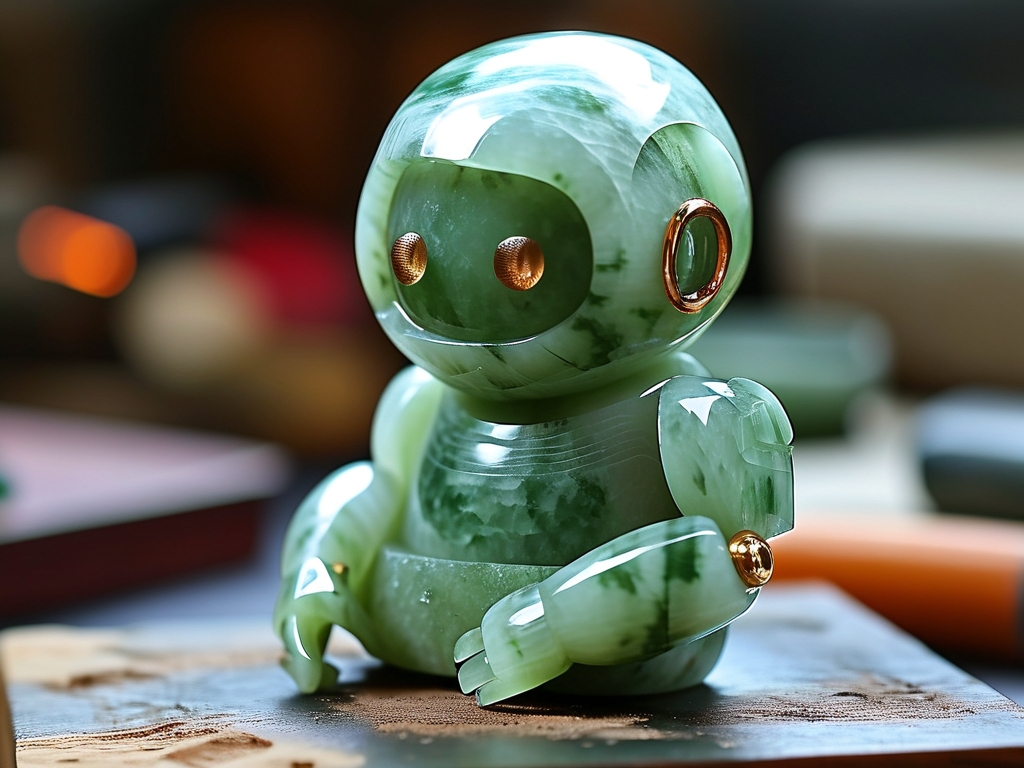For millennia, jade has held a sacred place in human culture, symbolizing purity, longevity, and spiritual harmony. From the intricate bi discs of ancient China to the ceremonial masks of Mesoamerican civilizations, jade carving has been a testament to human artistry and patience. Today, this ancient craft is undergoing a revolutionary transformation through robotic jade carving technology, merging tradition with cutting-edge innovation. This article explores how robotics is reshaping jade craftsmanship, its technical advancements, ethical implications, and the future of artisanal heritage in the age of automation.

The Legacy of Jade Carving
Jade, particularly nephrite and jadeite, is one of the hardest natural materials, ranking between 6.0 and 7.0 on the Mohs scale. Traditional jade carving relies on manual tools like diamond-tipped drills, abrasives, and painstaking hand-polishing-a process that demands years of training and an intimate understanding of the stone's structure. Master carvers often spend months or even years on a single piece, guided by intuition honed through decades of practice. However, this labor-intensive approach faces challenges in scalability, precision, and accessibility, especially as demand for jade artifacts grows globally.
The Rise of Robotic Carving Systems
Robotic jade carving systems integrate advanced technologies such as 3D scanning, AI-driven design algorithms, and high-precision CNC (Computer Numerical Control) machinery. Here's how the process works:
- 3D Scanning and Modeling: A raw jade block is scanned to create a digital 3D model. AI algorithms analyze the stone's internal fissures, color gradients, and density to optimize carving paths.
- Algorithmic Design: Artists or engineers input design parameters, which the system adapts to the stone's unique characteristics. Machine learning can even propose designs that minimize material waste.
- Precision Machining: Multi-axis robotic arms equipped with diamond-coated tools execute micron-level cuts, replicating complex patterns impossible to achieve manually.
- Surface Finishing: Automated polishing systems apply gradient abrasives to achieve the signature luster of jade.
Companies like JadeBot Dynamics and Liangzhu Tech have pioneered these systems, reducing production time by 70% while enhancing detail accuracy. For instance, a dragon-and-phoenix motif that once took a master carver six months can now be completed in three weeks with zero human error.
Technical Breakthroughs and Challenges
Robotic carving's advantages are undeniable:
- Precision: Machines replicate designs with 0.01mm accuracy, preserving intricate cultural motifs.
- Material Efficiency: AI predicts cracks and impurities, reducing waste by up to 40%.
- Accessibility: Lower costs enable small studios to produce museum-quality works.
Yet challenges persist. Jade's irregular hardness and translucency require adaptive algorithms that adjust cutting pressure in real time. Engineers have developed force-feedback sensors and dynamic path-planning software to address this. Another hurdle is replicating the "soul" of hand-carved art-subtle asymmetries and organic textures that define traditional pieces. Some systems now incorporate randomized algorithmic variations to mimic human imperfection.
Cultural and Ethical Debates
The adoption of robotic carving has sparked heated debates. Traditionalists argue that machines strip jade of its spiritual essence, as the craft historically embodied a meditative dialogue between artist and stone. As Master Carver Li Wei from Suzhou lamented, "A robot cannot feel the jade's heartbeat." Conversely, innovators counter that technology democratizes jade art, preserving endangered techniques through digital archives and enabling younger generations to engage with the craft.
Ethical concerns also arise around authenticity. Should machine-carved jade be labeled differently from hand-carved pieces? Auction houses like Sotheby's have begun certifying robotic works as "AI-assisted art," while purists demand stricter categorization.
Case Study: Reviving the Liangzhu Culture
A compelling example is the reconstruction of Liangzhu jade relics (circa 3300–2300 BCE), whose Cong tubes and bi discs feature enigmatic geometric patterns. Using fragments from archaeological sites, robotic systems reverse-engineered missing components, laser-etching patterns derived from ancient motifs. This project not only restored cultural heritage but also provided insights into Neolithic tools, revealing that Liangzhu artisans likely used primitive mechanical aids-a "Stone Age CNC" concept.
The Future: Collaborative Creation
The next frontier is human-robot collaboration. Systems like CarveAssist allow artists to guide robotic tools manually, blending tactile craftsmanship with robotic precision. Augmented reality (AR) interfaces project holographic designs onto raw jade, enabling real-time adjustments. Meanwhile, blockchain platforms are being used to authenticate hybrid artworks, recording every human and machine contribution.
Economic and Environmental Impact
Automation is reshaping jade economies. In Myanmar, where 70% of the world's jadeite is mined, robotic workshops are reducing reliance on exploitative labor practices. However, this also disrupts livelihoods for traditional carvers, necessitating reskilling initiatives. Environmentally, optimized material use and electric-powered systems lower the craft's carbon footprint-a critical step as mining-induced ecological damage faces scrutiny.
Robotic jade carving is not a replacement for human artistry but an evolution of it. By handling repetitive tasks and technical complexities, machines free artists to focus on creative vision and cultural storytelling. As this technology matures, it promises to preserve ancient traditions while unlocking new forms of expression. In the words of Dr. Elena Marquez, a cultural roboticist at MIT, "The soul of jade lies not in the tool but in the intention. Whether wielded by hand or code, it remains a bridge between earth and imagination."
The journey has just begun. As algorithms grow more intuitive and collaborative systems more seamless, the fusion of robotics and jade carving may well define a new renaissance for one of humanity's oldest arts.









